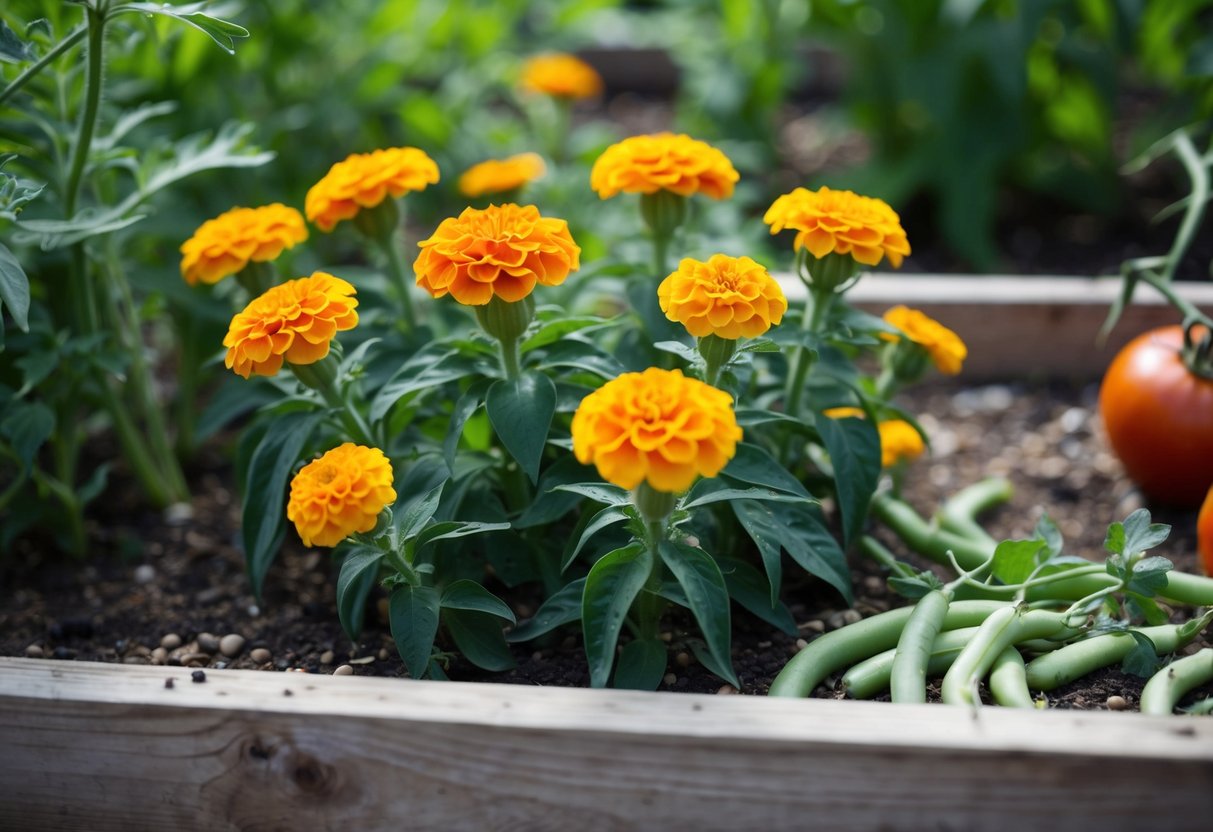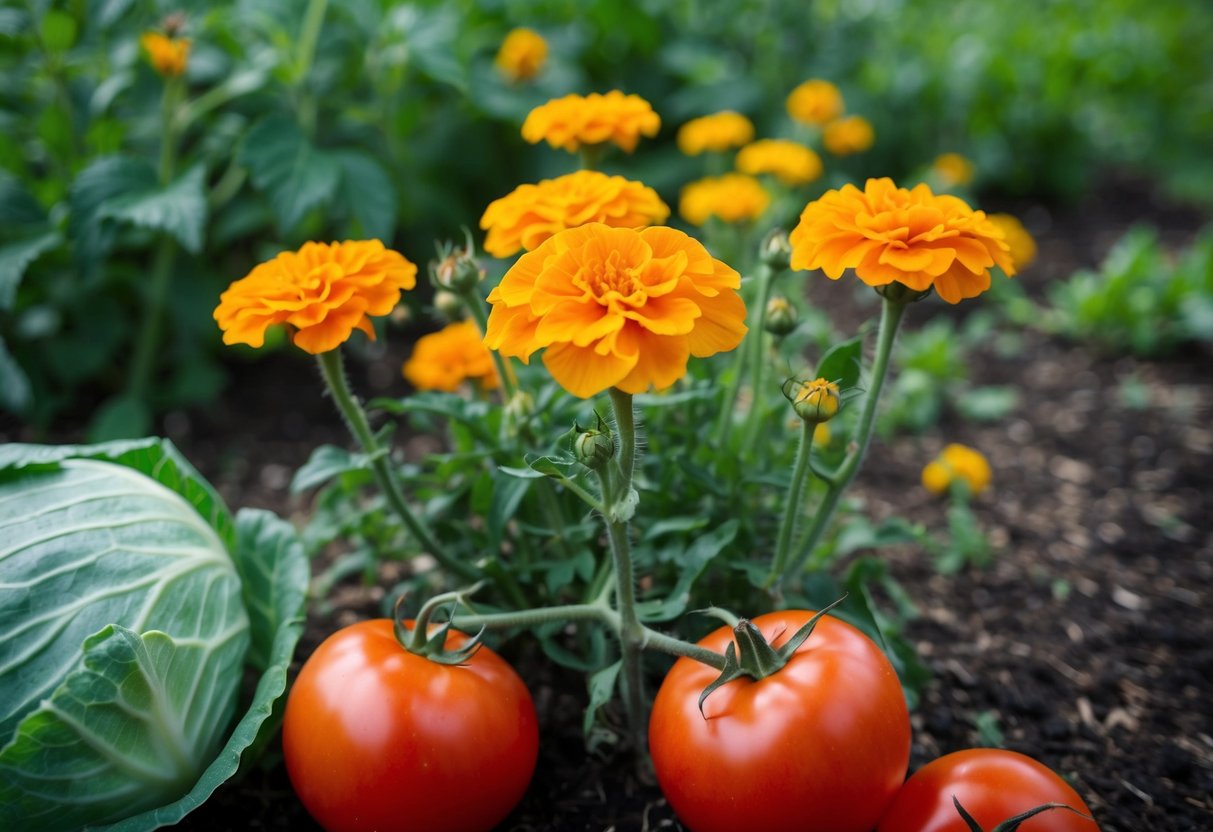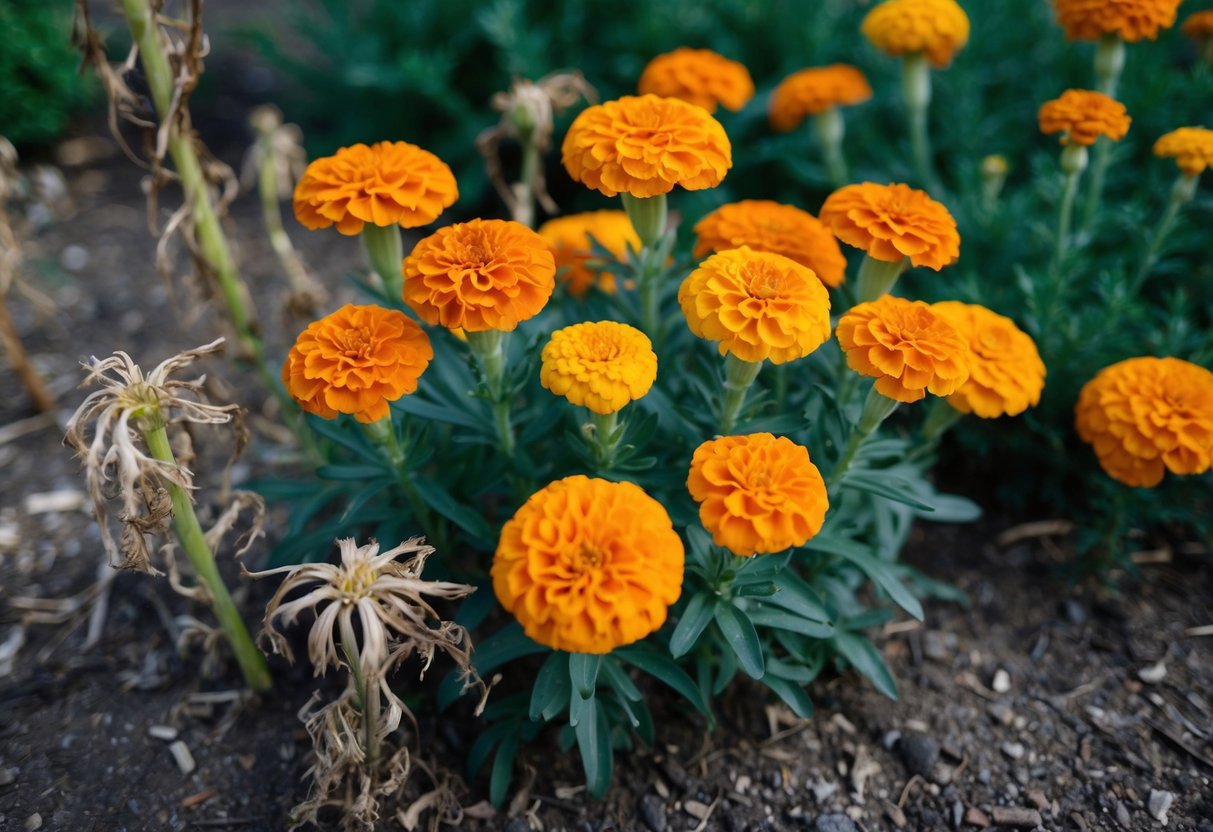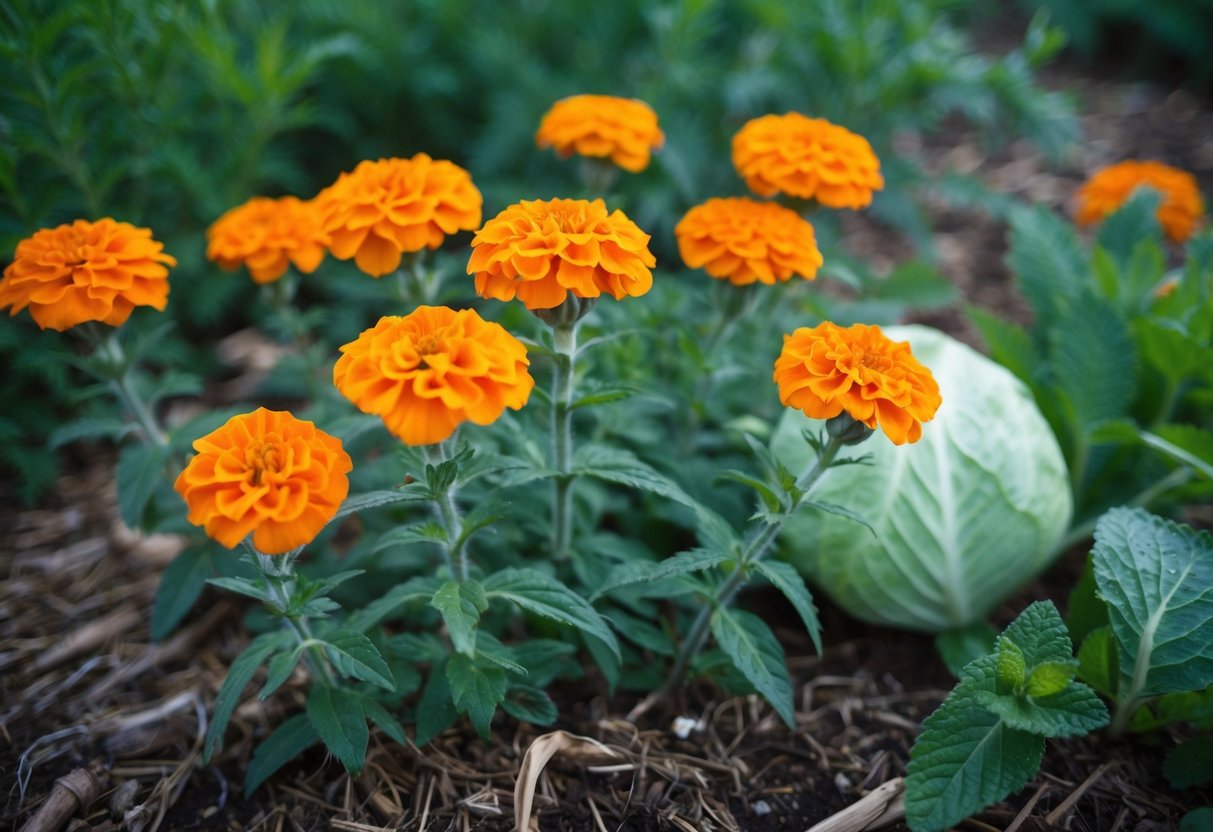What Not to Plant with Marigolds: Avoid These Garden Mishaps
Are you looking to spice up your vegetable garden with marigolds this year? These bright flowers are known for their ability to repel pests and add a splash of color to your garden. But be careful! Marigolds can hinder potato growth by releasing chemicals into the soil.

Companion planting can positively impact your garden’s health, but it’s essential to know which plants work well together. Some plants like thyme pair excellently with marigolds, benefiting each other by keeping pests at bay. Other plants might not have the same harmonious relationship, so it’s crucial to understand what marigolds can and can’t do for your garden.
Having a bountiful garden takes planning. With the right pairings, marigolds can help your plants thrive. Knowing what to plant and what to avoid can make a world of difference in achieving a flourishing and vibrant garden.
Companion Planting Fundamentals

Companion planting is more than just placing plants next to each other; it’s about creating a thriving ecosystem. Learning how marigolds contribute to this can improve your garden’s health and productivity.
Benefits of Companion Planting
Incorporating companion plants in your garden can boost plant health and productivity. By choosing the right combinations, you can promote biodiversity and improve soil health. This method often results in better growth and yields.
Natural pest control is another advantage. Certain plants, such as marigolds, help deter harmful insects. They can also attract beneficial insects that encourage garden health.
Designing your garden with intercropping in mind can optimize space. Spacing compatible plants closely allows them to share resources efficiently. With well-planned garden design, you can ensure each plant receives full sun and thrives.
Understanding Marigolds in the Garden
Marigolds are a popular choice for companion planting due to their versatility. These resilient plants thrive in well-draining soil and full sun, making them a practical addition to many gardens.
Their ability to act as a natural pest control method is one of their biggest benefits. Marigolds release chemicals that deter specific pests such as nematodes, which harm neighboring plants.
Including marigolds can enhance garden aesthetics and function. When choosing companion plants, consider those that can coexist with marigolds without competing for nutrients. Avoid plants like potatoes, which may struggle due to marigolds’ growth-inhibiting chemicals. By understanding how to use marigolds effectively, you can improve your garden’s success.
Marigold Companions to Avoid

When planting marigolds, it’s important to know which plants to keep at a distance. Certain vegetables and crops can have negative interactions that might affect their growth. Being informed about these can help maintain a healthy garden.
Why Some Plants Don’t Pair Well with Marigolds
Certain plants compete with marigolds for nutrients and space. These plants may have soil and nutrient needs that differ from what marigolds offer, leading to potential conflicts that hinder their growth. Marigolds release chemicals that can repel pests, but these chemicals might also impact some vegetables adversely.
Plants like beans and brassicas, such as cabbage and broccoli, may not thrive. Beans, in particular, might not grow as well when placed too close to marigolds. The reasons can be due to differences in soil preferences or chemical interactions that don’t support their development.
Specific Plants to Avoid Near Marigolds
One plant you should avoid planting near marigolds is beans. They may not grow well together due to differing soil preferences. Similarly, members of the brassica family, such as cabbage, broccoli, and cauliflower, can be affected by the chemicals marigolds release.
These chemicals can interfere with nutrient uptake in brassicas. As a result, plants like kale and Brussels sprouts could also face challenges. It’s wise to consider the relationships between plants and avoid pairing those that might compete for resources or disrupt each other’s growth.
Effects on Vegetables and Herbs

Marigolds can have both helpful and harmful impacts on your vegetable and herb garden. While they can encourage the growth of some plants, they can also hurt the development of others. Knowing which plants work well with marigolds and which do not is key for a thriving garden.
Positive Interactions with Marigolds
Marigolds can be great companions for tomatoes and peppers. Their roots release chemicals that deter nematodes, aphids, and whiteflies. This natural pest control can help keep your vegetable plants healthy without the need for harsh chemicals.
Herbs like basil, thyme, and dill can thrive next to marigolds. Spreading marigolds near basil can enhance the aroma of basil, while thyme and marigolds together can deter certain root-boring worms. Planting dill nearby can aid in attracting beneficial insects, helping your garden flourish.
Potential Negative Outcomes
Not all plants get along with marigolds. For instance, potatoes may suffer when planted near marigolds. This is because marigolds release compounds that can inhibit potato growth and interfere with their tuberization process.
Similarly, lettuce may not grow as well when planted too close to marigolds because they can compete for nutrients and space. While marigolds can protect tomatoes from pests, they may compete with leafy greens like lettuce or parsley. Pay attention to spacing and nutrient needs for each type of plant to ensure healthy growth.
Complementary Flowers and Ground Covers

Planting marigolds with complementary flowers and ground covers can boost your garden’s health and appearance. Certain flowers ward off pests, while the right ground covers help maintain soil health and moisture.
Floral and Foliage Allies
When choosing flowers to plant alongside marigolds, look for those that have similar growing conditions. Zinnias and petunias are excellent options. They both thrive in full sun and well-drained soil. Zinnias can add a splash of color and also attract beneficial insects.
Lavender is another great companion. It helps repel pests with its strong scent. Cosmos can be planted with marigolds, too, as they’re both low-maintenance flowers.
Nasturtiums are especially helpful. They can act as a trap crop by attracting pests away from your marigolds.
Lilies are another option, but ensure they have enough space.
Ground Cover Considerations
To enhance the soil around marigolds, consider using ground covers like creeping thyme or alyssum. These plants prevent weed growth and help retain soil moisture, which is beneficial for all your garden plants.
Creeping thyme is a great choice since it also repels pests with its scent. It can fill spaces in your garden with attractive greenery.
Sweet alyssum is low-growing and produces clusters of small, fragrant flowers. It can attract pollinators, adding life to your garden.
Consider rosemary and sage for options that provide both ground cover and foliage to add depth and texture to your plantings. These herbs have aromatic properties that can enhance marigold growth.
Designing Your Garden Layout

Designing a garden layout with marigolds can enhance your garden’s health and beauty. Understanding marigold placement and maximizing their benefits leads to better pest control and a more vibrant garden.
Marigold Placement Strategies
When planning your garden, think about where marigolds can provide the best defense against pests. Marigolds work well as a trap crop, drawing harmful insects away from vegetables. For instance, place them near your vegetable gardens to help protect plants like tomatoes and beans.
Interplanting marigolds with your crops can improve resilience by naturally repelling pests. Be mindful of their impact on certain plants. Avoid placing them near potatoes since they can release chemicals that might hinder potato growth. Consider planting marigolds along the garden’s borders to act as a natural barrier against unwanted invaders.
Maximizing Marigold Benefits
Marigolds attract pollinators such as bees and butterflies. These pollinators boost the health of nearby plants and help with pollination.
By integrating marigolds, gardens can experience the companion planting benefits that come from these vibrant flowers.
Incorporate marigold companion plants like basil or cilantro to capitalize on the flowers’ pest-deterring properties. These plants work together well, enhancing growth and the garden’s resilience.
Use the marigolds’ pest deterrent abilities to protect fragile plants. Consider planting them with cabbage or broccoli for optimal benefits.







